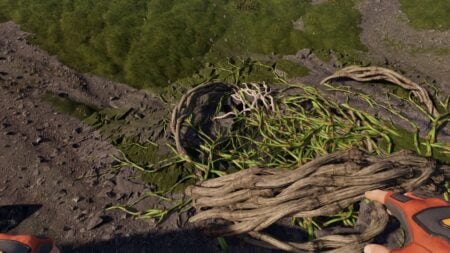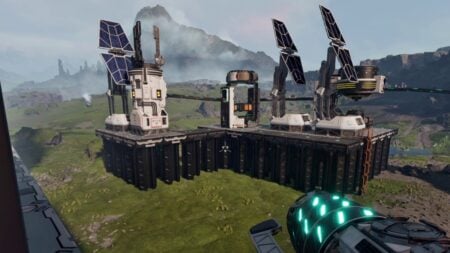Skip To...
It’s been clear for some time that Riot Games is committed to a distinct philosophy with its Valorant map design. Each has a highly contested area that sees an explosive phase of action, which is intended to make for thrilling engagements that are both fun to play and exciting to spectate. This philosophy has seen maps like Haven and Ascent stick around since the game’s launch, and why the likes of Icebox were removed. Now, with the arrival of the new Valorant’s map, Sunset, we have another in the rotation that puts a strong focus on controlling a key area. After having played the map in early access, and now having experienced it in competitive play since joining the map rotation, we’ve compiled some thoughts for a full Valorant Sunset map .
New Valorant Map Sunset Is Designed Around Mid Control
In the case of Sunset, it’s all about mid-control. This central area is very obviously crafted as its main focal point, crucial for dictating the pace of combat and the information available to both teams. Put simply, it’s a control mid, and control the round design. The catch with Sunset’s mid, though, is the interconnecting lanes that feed it from all sides. Where other maps only require players to focus attention in one or two directions, Sunset presents danger from multiple angles. Even when you’ve got control, there’s always the worry you could be flanked at any moment. There’s just not that same sense of security that, Attackers feel when having conquered mid of a map like Split.
Sure, every map in the game requires teams to maintain some form of extremity control, but in Sunset it’s absolutely vital. It’s a lurker’s paradise, which means enemy smokers and sentinels are highly likely to push and catch you off guard. The sharp corners and the small nooks and crannies they offer allow players to lean heavily into this playstyle, and those in mid need to beware of four different angles they can pushed from. Notably, there’s also a closable door in mid, which can only be activated from one side.
Another unique aspect of Sunset’s design is the fact that all the lanes and walls that separate them are very close together. That’s going to have a major impact on determining the meta for the map, as Agents with abilities that can pass through walls will be extremely powerful. The likes of Omen’s flash, Breach’s stuns, and Chamber’s teleport to name just a few will get plenty of value — especially around the Spike sites.
Sunset Features Narrow Lobby Areas
Before I tackle the Spike sites, let’s first explain the lobby areas that directly precede each of them. They’re quite unique. Indeed, they’re another defining aspect of the map’s design and probably won’t be to everybody’s taste.
As is the case across the map, small, narrow alleyways interconnect Sunset. These culminate in lobby zones directly before the main entrance to both Spike sites, and they’re going to largely determine how the map feels to play. Sunset’s lobby areas are tight. When these sorts of zones are tight it usually makes busting through them as Attackers tricky. Notably, that isn’t necessarily the case here, though, as the nature of those closely grouped-together walls and lanes I mentioned before should provide a range of options to get through.
Also, while the overall chokepoint can be considered compact and narrow, the actual entranceways are somewhat wide. A Brimstone or Omen smoke doesn’t quite cover them entirely. Might we see Viper and Harbor as meta controllers here? Quite possibly. In any case, these lobby areas are going to prove big battlegrounds after mid-control has been established. I can envisage some devastating ultimates from defenders proving hugely valuable when combined with other util and timed correctly. I’m also fairly sure that Sunset will prove a map where aggressive Defender plays are common.
A/B Spike Site Designs are Polar Opposites
So, moving on to the Spike sites themselves. In Sunset, they both have quite an unusual layout. A site (pictured above) is the more conventional of the two, with familiar features like spammable boxes and an elbow layout backsite. The elbow wraps right around the area, though, and the alleyway itself has little nooks for defenders to hide. Watch out for judge players here! On-site, there are further places for site anchors to tuck in and hide, and those spammable boxes will make digging them out even trickier.
B, on the other hand, is strange in that unless you were looking at the map I’m not certain you’d even know it was a Spike site. This fairly wide open space has a large central pillar, but that’s really the only defining feature. As a result, there’s no immediately obvious default plant spot to hunker down and get a safe plant. Attackers will need to make sure they’re protecting the planter from multiple angles, possibly even using smoke to conceal them more than is typically seen on other maps.
Sunset Is a Solid Addition to the Rotation
The real question, of course, is whether Sunset is actually fun. Are players going to enjoy this new addition to the roster? I’m pretty confident that will be the case. Sunset is a fairly simple map; there aren’t really many gimmicks or novel features that players will find unintuitive. Overall, it actually reminds me of Ascent in its aesthetic and the general ebb and flow of its gameplay. The difference is that where Ascent’s Agent meta is pretty stale, I can see lots of different combinations working on Sunset. And that’s a large part of what Riot Games is trying to achieve with its Valorant map pool — not only are the big engagements part of its philosophy but also ensuring that there are plenty of ways to approach map strategy. Sunset should prove a big win for Valorant.
That wraps up our Valorant sunset review. For more on the game, including the latest patch notes, keep it locked to The Nerd Stash.










